“To a great mind, nothing is little” – Sherlock Holmes (A Study in Scarlet)
If the headline of our article has left you confused, we would like to apologize. Because the subject of our article is itself unconventional, and something that is often overlooked in history, despite the tremendous effects that occurred in history because of it. Yes, we are talking about rats.
Now do the so common and rather unfriendly neighbourhood vermin deserve a place in history? The answer would be a surprising - yes. At the outset that may be hard to believe. However, just read on as how a tiny nuisance of the neighbourhood, left a permanent impression in art, law & demography of the world.
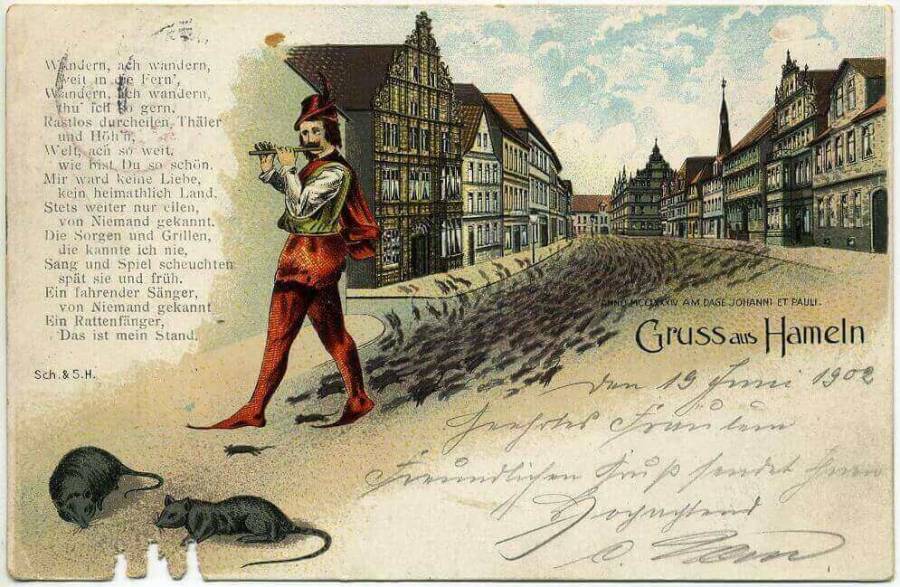
History can be created because of many different reasons, but quite often it is the bad news rather than the good news, which leaves a lasting impression in history. Lessons learned from pain, misery & death are remembered for centuries and often become landmark chapters of history.
The protagonists of our story – Rats have also their place in history because of this ignoble reason. They were directly responsible for causing the death of millions of people in one of the deadliest & greatest pandemics which later would become notorious as the – Black Death.
Blackdeath which till now, remains one of the greatest pandemics to occur, killed between 75 to 200 million people in the entire world, with 60% population of Europe dying due to the disease. The pandemic that occurred was because of the plague - an infectious disease that is caused by the bacterium Yersinia Pestis, which is present usually in the wild rodents. Plague occurs in humans when the common house rats (also called black rats or ship rats) become infected.
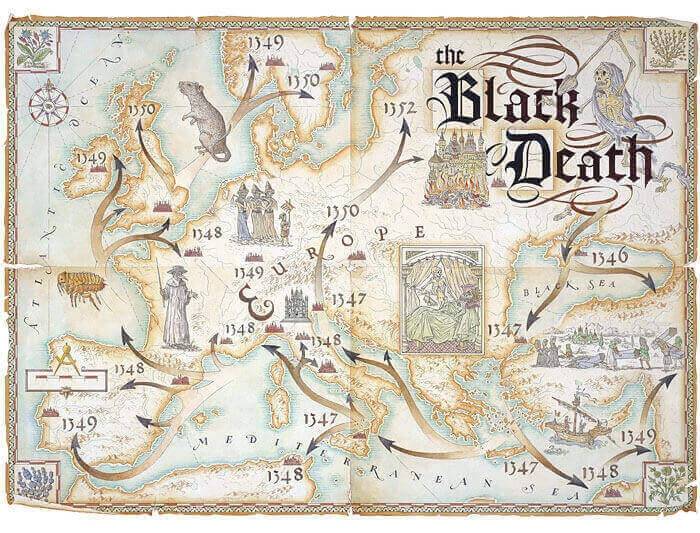
House rats stay close to people, whether they are traveling by ship in the sea (resulting in the rapid distant spread of plague in the medieval era, by infected rat fleas present on ship rats) or living in the land. Needless to say, the proximity of the rats to the people living in the area, is the main reason that plague spreads to humans, by the bite of rat fleas (present in the infected rats) thus introducing the causative bacteria of plague into the human body.
The Pandemic of Black death started in China and gradually made its way into different parts of Europe (via the different trade routes) with the incidence peaking between 1347 to 1351. The Black Death was the beginning of the Second Plague Pandemic and though one of the greatest was not certainly the first time that Plague as a Pandemic had caused devastation across a large part of the world. The Plague of Justinian in 541 AD marked the onset of the First Plague Pandemic, which continued for more than two centuries and was responsible, for millions of death.

The effect of the Black Death was tremendous on the society of the medieval era. So many deaths across different countries severely affected manpower available in all fields of life and trade & economy were also badly affected. Cultivation of crops became difficult, as laborers were hard to find. Religious discrimination increased, as certain religions were blamed for the spread of black death. Many construction projects were either abandoned or delayed.
On a positive note, incidences of wars also went down (although for a short duration only). Wages for jobs went up considerably & property prices also came down. This also brought many changes in the rigid social hierarchy of the time. No doubt the lifestyle of people in the medieval era was greatly altered due to the effect of the black death and rats. Infected rats are now held as the main culprit for causing the disease and devastation, that occurred such a long time ago.
Association of Cats with Rats is not just limited to the “Tom and Jerry” shows that all of us have seen in our childhood, but it has affected the course of history too. You may find that rather hard to believe, but here is a story that proves - “Truth is stranger than fiction”.
Now we are speaking about the Medieval era & values and beliefs followed by the people were not the same as they are today. The Church was greatly respected and feared at the same time, and the Pope as the supreme in charge could issue edicts which the normal people were bound to follow. However, quite a few of these edicts would later become controversial and had unforeseen complications in the society of the time. One such view was regarding the opinion of the Catholic church regarding the cats.
The middle ages were a time when superstitions were widely present and religious dissent – real or even suspected was not at all tolerated and were met with harsh repercussions. By the time Pope Gregory IX became Pope in 1227, there were widespread rumors of hidden religious dissent rising across early 13th century Christian Europe, which challenged the views cherished by the church. This was also a period when the “inquisition” that would later greatly alter the history of Europe, was just around the corner.

It was Conrad of Marburg, the Papal Inquisitor to Gregory IX, who was chiefly responsible for conveying the impression that – Cats were evil, to the Pope. This was because according to Conrad of Marburg, after his thorough investigations he came to the conclusion, that Cats were associated with devil worshippers & Cats were an integral part of their ceremony.
To prove his point, Conrad of Marburg, brought confessions of devil worshippers (which were always obtained by torture). The confessions showed that Satan was half cat & half-human and also could take the form of a cat during ceremonies held by devil worshippers. People who were initiated into the fold of devil worshippers would give up all their allegiance to the church and moral code given by it.
Pope Gregory IX couldn’t just ignore what he was told. His response was to issue a Papal bull (an edict issued by the Pope) called “Vox in Rama” in June 1233. Vox in Rama meant – “A voice in Ramah” (Ramah being a city in ancient Israel) and the edict was sent to Emperor Fredrick II, King Henry VII of Germany & some other senior members of the clergy, ordering them to take strict actions against those who were devil worshippers and those who carried out the evil ceremonies.
The Papal inquisition established by Pope Gregory IX in 1233 AD, was done to regularize the persecution of heresy, by holding formal proceedings against the heretics thus legalizing the whole procedure of punishing the heretics. People had to prove their loyalty to the Church and soon extermination of cats began in large numbers, sometimes along with suspected people, who were also persecuted.

Cats were killed in great numbers and their population decreased in great numbers. However, our story here is not about cats but rats. So how does the medieval history of the killing of cats to please the Papacy and other senior members of the clergy, figure in our story? Actually, for some, there is a very close correlation.
According to some historians and scholars, when the Black Death was ravaging Europe in the mid-1300s, the decreased numbers of rat’s main predator exacerbated the already worse situation. This was because the rats and rat fleas present on them could spread & multiply more easily causing the plague to become worse and spread to distant lands.
Although the killing of Cats diminished and gradually come to an end after the death of Pope Gregory IX, this would not be the end of the matter. In the late 1400s, Cats were again killed in large numbers as they were thought to be associated with another unholy entity of the time – the witches. A large number of witch trials occurred, cats were also officially excommunicated and exterminated in large numbers.
However, recently the theory of Pope Gregory IX’s papal bull causing the death of innumerable cats, thus contributing to an increase in number rat population and making the Black Death worse has been questioned. One of the most important objections to this theory was how a Papal Bull that was issued in 1233 and applied in a relatively smaller area could influence the widespread pandemic of Black Death that occurred more than a century later?

The cat population increases relatively fast & Rat fleas responsible for spreading the disease can also transfer to cats and dogs. Hence it is quite possible, that the Papal bull called Vox in Rama’s effect on the killing of cats has been grossly exaggerated and it may not have been responsible for an increase in the number of rats, and finally, morbidity and mortality observed during the black death.
Pied Piper of Hamelin is a story, that all of us have read in our childhood. However, what people do not know is that the story is based on real history; but a bit of the story first for those who may not have heard about it.
The story is based on events that occurred in the Medieval period (in 1284 AD), in the town of Hamelin in Germany. The town of Hamelin was suffering from a severe rat infestation, associated with its accompanying complications, which included possibly the most dangerous disease of the time – Plague. The people of the town were desperate to get rid of the rats but had no means to do so.
However, one fine morning, the hero of our story (who would later turn into a villain) – a piper arrives in the town and assures the people that he would rid the town of rats, provided that he was paid for it. The people agreed & the piper played the pipe – which attracted all the rats of the town, to the music. The piper led them to the Weser river, where they all were drowned.
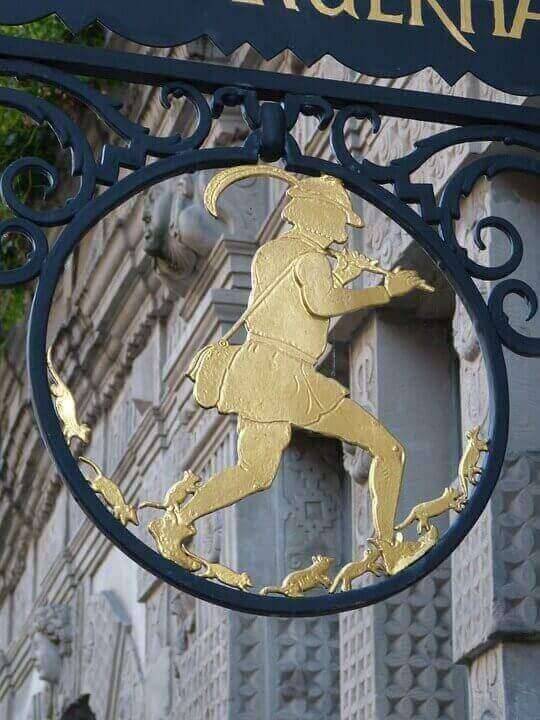
That would have been the end of the story (with a happy ending) only if the townsfolk paid the piper for his job, done perfectly well; but then people rarely do, what they say, as the piper soon found out. Not was he just denied the money that rightfully belonged to him, but accusations were made that the piper had himself brought the rats to the town so that he could manipulate the people and get money from them.
Needless to say, the piper was not at all pleased by the sudden turn of events. He left quietly only to return on Saint John and Paul’s day, when all the adults were in the church and the children were left unattended. The piper started playing his pipe and instead of rats (which no longer existed in the town), it was the children, who came out in large numbers & started following him.
It is said that 130 children followed the pied piper out of the town, to be never seen again. Only 3 kids were left behind the town – a blind one, a deaf one & finally a lame kid, who could not follow the pied piper for obvious reasons. It was these 3 children who would later tell the townsfolk of what had happened to the remaining children.
The earliest mention of the story being a fact of history comes from a stained-glass window that was present in 1300 AD in the church of Hamelin. Although this vital piece of evidence was destroyed in the year 1660, however, its mention describing the story remains in different descriptions dated between 14th to 17th century. Even a record of the town chronicles from the year 1384 mentions, that “it is 100 years since our children left”.
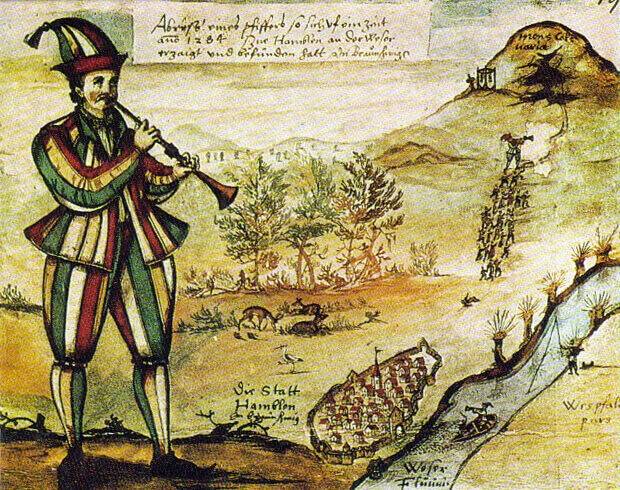
So, the story was at least based partially on real history, but did the pied piper lead the rats first and later the children out of the town? Not really. The most logical conclusion is that the story was based on different real historical events, joined together to form a story, which wouldn’t be just interesting, but have moral undertones also, for teaching the children, a thing or two about real life.
Rats were a real problem in medieval towns where the plague was a rather common occurrence. Rat catchers were also sometimes professionally employed for the successful extermination of rats. However, it would be important to add here that rats were absent from earlier versions of the story and were added later on.
According to some scholars “children of the town” was a term used to describe - the people living in the town, implying that many people left the town rather suddenly. Different causes have been expressed to explain this sudden departure of the people and decrease in population, but no theory has been uniformly accepted to date.
According to some scholars, the pied piper was the personification of death & people perished in the plague. However, the most severe of these plagues, the Black Death would occur only after more than half a century after the incidence occurring in Hamelin. Death because of other causes, kidnapping by slave traders, or being caught up in crusades & emigration of the town population to other areas of Europe (for a military campaign or better career prospect or war), has also been postulated as other probable reasons to explain this departure of population.
The discussion above has clearly shown that rats in Medieval Europe were very unwelcome animals (as they are today) and it would be just a matter of time before they ended up on the wrong side of the law. This would happen in 1508 in the small village of Autun in France and would lead to an incident that would later become famous as the Autun Rats Trial or Rat Trial of 1508.

The villagers were facing serious problems in growing their barley crops because rats were eating them. The offenses couldn’t go unpunished and soon a court was convened to take a legal course of action against the offending rats, who were causing so much damage. Thankfully, the presiding bishop decided that rats should get an opportunity to defend themselves, hence a lawyer was appointed for them, to represent them in a case that later became famous as, Autun Rats Trial.
Barthelemyde Chasseneuz may have remained an obscure lawyer in history, but perhaps the most glorious moment in his life came when he acted as a lawyer to the unrepresented rat population of Autun, thus providing them justice, which rightfully belonged to them.

Once the Autun Rats Trial began, the first problem that came to the notice of the authorities was that the accused were not attending the court proceedings. Of course, if proceedings against the rats were going on, at least they should be present on the trial. However, Barthelemy de Chasseneuz – the clever lawyer that he was successfully countered this allegation of the prosecution.
Barthelemy de Chasseneuz stated that it was not just a few rats, who were under trial, but all those who were living in the region, and as they were highly scattered and lived in different areas, so it was highly probable that the information about the summons issued to them, may not have reached all of them. Strange as the logic may seem, the court agreed to this plea & summons were posted in all the churches of the area.
Unfortunately, on the next scheduled date too, the rats failed to appear in the court. However, Barthelemy de Chasseneuz was not discouraged by this turn of events. He as a brilliant defense lawyer argued in the court that – The rats (his clients) had ignored the summons as the journey to the Autun courthouse was extremely dangerous to them, and their life would be in peril if they traveled through the roads filled with hostile cats, dogs, and unfriendly people.
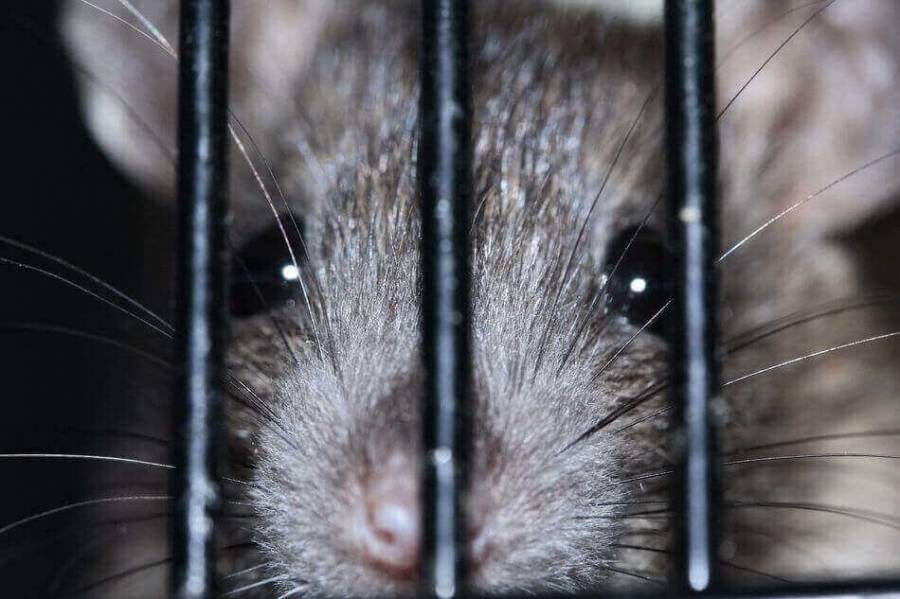
So as the accused were not safe to come and attend the court proceedings, they couldn’t come. However, twisted this episode may have been till now, this part made perfect sense for the people then, as it would do now. If the security to an accused in a trial couldn’t be provided then the whole undertaking becomes questionable and futile.
Further details on the progress of the case are not available, but most legal historians believe, that in all likelihood, the rats must have been acquitted. Although this legal case in itself seems quite elementary and even bordering on the ridiculous, defense lawyers in the future would use the same arguments as given by Barthelemy de Chasseneuz, to defend their clients; who thankfully were humans.
The normal house rats evolved millions of years ago however, understanding their importance in causing harmful diseases and another negative influence in society is a much more recent phenomenon. These tiny animals have come into much focus especially regarding the Medieval Era – where they have been associated with not just harmful diseases but have also influenced arts, literature, and have given even an astounding legal angle.
Although perceptions about the role of rats have changed much in recent years regarding the above-mentioned incidents, described above. Recent claims declare that it was not Rats, but fleas and body lice which were responsible for spreading Plague bacteria during Second Plague Pandemic. Even the belief, that it was the Vox in Rama, declared by Pope Gregory IX being responsible for increasing the severity of the Black Death has been contested in recent times.

Pied Piper of Hamelin though based on real history is taught in modern schools more for its moral values. Although Autun Rats Trial though appearing illogical at the outset reflects the fact that all lives on earth – however small, are entitled to justice. This article on the history of rats in the Medieval Period, though at the outset may appear to be ridiculous, however, reflects the fact that even the tiniest of animals, can leave its footprints behind in the pages of history.